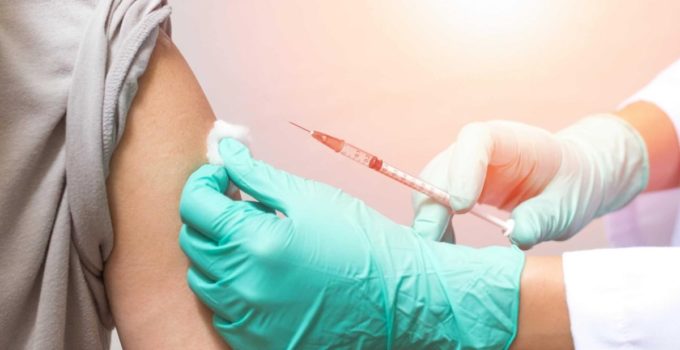Life as we Knew it:
COVID-19 Rules Update and Recommendations: Our lives have once again changed to be the closest to a life before COVID-19. Exit the traffic light system and vaccination mandates. For businesses, it is again time to review your health and safety risks.
Omicron Rules & Regulations – Key Questions Answered

Mandated Boosters
On 23 January, the snappily named “COVID-19 Public Health Response (Vaccinations) Amendment Order 2022” came into force. This amends the previous 2021 Order and requires boosters for certain groups of workers.
In summary, if your employee was mandated to be double vaccinated, they are now mandated to get the booster vaccination. The timing of the booster requirement reflects when the 2021 Order was introduced for the different classes of workers.
If a worker is 18 years of age or over and work in the following areas, they must now also receive a booster. The first 7 groups must have their booster vaccination before 15 February 2022, and groups 8 and 9 by 1 March. Currently there is no deadline for workers in group 10 to receive booster doses. This may change in the future as the current Omicron outbreak spreads.
- Managed quarantine facilities;
- Managed isolation facilities;
- Airports;
- Ports;
- Aircraft (including aircrew);
- The handling of affected items from MIQ, aircraft and ships;
- Health and disability sector;
- Corrections;
- Education sector; and
- Hospitality, gyms, events, close-proximity businesses and tertiary education providers.
Who has to Isolate? For how long?
There are a few different scenarios, and the rules are changing frequently, however as of 27 January 2022 here are the rules in table form for (hopefully) easy reference. The government announced on Wednesday that they are going to manage Omicron in three phases, and the requirements for each phase differ. There are definitions at the bottom of the table.
| Isolation requirements Phase 1 | Isolation requirements Phase 2 | Isolation requirements Phase 3 | |
| Waiting for COVID test results (not a household close contact) | Until you get a negative COVID test result | Until you get a negative COVID test result | Until you get a negative COVID test result |
| Tested COVID positive | 14 days minimum | 10 days minimum | 10 days minimum |
| A close contact of a COVID positive person (non-critical worker), with symptoms | 10 days, and get tested | 10 days, and get tested | no information yet on isolation period |
| A close contact of a COVID positive person (non-critical worker), without symptoms | 10 days | 7 days | no information yet on isolation period |
| A household member of a COVID positive person (non-critical worker) | 24 days (10 days after the COVID positive person has completed their 14 days or had their last symptom.) Noting if/when this person tests positive for COVID, the 14 days isolation of being a COVID positive person starts. | 17 days | no information yet on isolation period |
| A household member of a close contact of a COVID positive person (non-critical worker) | Stay home until the close contact returns a negative day 5 test result.
If the close contact develops symptoms after a day 5 negative test, secondary contacts should stay home again until a further negative test result is returned. |
Stay home until the close contact returns a negative day 5 test result.
If the close contact develops symptoms after a day 5 negative test, secondary contacts should stay home again until a further negative test result is returned. |
no information yet on isolation period |
| A critical worker who is a close contact of a COVID positive person | Return to work with evidence of a negative rapid antigen test (from 3 February) | Return to work with evidence of a negative rapid antigen test | Return to work with evidence of a negative rapid antigen test |
| A critical worker who is a household member of a COVID positive person | Return to work with evidence of a negative rapid antigen test (from 3 February) | Return to work with evidence of a negative rapid antigen test | Return to work with evidence of a negative rapid antigen test |
| A critical worker who is a household member of a close contact of a COVID positive person | Return to work with evidence of a negative rapid antigen test (from 3 February) | Return to work with evidence of a negative rapid antigen test | Return to work with evidence of a negative rapid antigen test |
| You feel like a box of fluffy ducks, but everyone else seems to be off work. | Go to work. Your time may yet come and then you might wish you were at work. | Keep going to work. It will make those stuck at home with the kids / flatmates / extended family / partners etc, very jealous indeed. | If you have got this far without getting COVID or being a close contact, buy a lottery ticket. |
Definitions
Phase 1: Where we currently are – a “stamp it out” approach. Includes the same contact tracing, isolation, and request that everyone who is symptomatic be tested at a community testing station or at a primary health provider.
Phase 2: The objective is to slow the spread and protect our vulnerable communities.
Phase 3: When cases are in the thousands
Note: At time of publishing there was only vague information on what determines when we move phases.
Close contact in phase 1 and 2: Been within 2m of a COVID positive case for 15 minutes or more.
Household members of a COVID positive case.
Close contact in phase 3: Will change to “household and household-like contacts only”.
Critical worker: A critical worker is identified by their employer as a role within a critical industry as broadly defined by government that requires a person with particular skills who:
- is required to undertake their role in person at the workplace; and
- is in a role that must continue to be performed to either prevent an immediate risk of death or serious injury to a person or animal, or prevent serious harm (social, economic or physical) to significant numbers in the community.
The list of roles considered to be critical hasn’t yet been released.
Who gets paid?
The pay obligations resulting from the requirement to isolate are a little different to when we had lockdowns. During lockdowns the employer was unable to provide work. Now, when an employee needs to isolate, there is still work available for them to do, they just can’t do it because of the isolation requirement. As such the obligation to pay the employee is no longer necessarily there. Please be aware that these scenarios have not been tested in the Employment Relations Authority, and this advice is based on currently understood employment legislation.
Isolating employee who can and does work from home
- Employee is paid as normal.
COVID positive employee
- If they have paid sick leave owing, they get paid sick leave until that runs out, then it is unpaid sick leave.
- If you have a policy or term in the Employment Agreement relating to COVID leave or special leave make sure you check those out.
- If they don’t have any paid sick leave owning, there is no entitlement to be paid.
HOWEVER… you may be able to apply for funding from the Leave Support Scheme to help the employer to pay the employee. One of the declarations the employer must make when applying for the funding is that “you will for the period you receive the subsidy: use your best endeavours to pay at least 80 per cent of each named employee’s ordinary wages or salary.” Additionally, “you will not make any changes to your obligations under any employment agreement, including to rates of pay, hours of work and leave entitlement, without the written agreement of the relevant employee.”
So, the employer will need to use their ‘best endeavours’ to pay the employee over and above the subsidy if the subsidy is less than the employee’s ordinary pay. There is no definition of ‘best endeavours’ and this has not yet been tested in the Employment Relations Authority or Court. What has been established is that an employer cannot unilaterally reduce the employee’s ordinary pay. Any change to pay must be by agreement (in writing).
If the employer makes an assessment that paying in addition to the subsidy is not affordable (consult your accountant and bank about this to help establish ‘best endeavours’), we suggest you negotiate now with your employees on what the options are and get this agreed in writing. If it is not possible to pay the difference between the subsidy and ordinary wages, and your employee does not agree to the pay reduction while they are isolating, then the alternative is not applying for the subsidy and the employee is paid nothing while they are isolating.
Employee who is a household member of a COVID positive person – can’t work from home
- Unless there is a specific term in their Employment Agreement or a policy, there is no entitlement to be paid unless they are required to care for a sick or injured spouse, partner, dependent child or any other dependent individual in the household they are isolating in and have paid sick leave owing.
HOWEVER… you may be able to apply for funding from the Leave Support Scheme to help the employer to pay the employee. One of the declarations the employer must make when applying for the funding is that “you will for the period you receive the subsidy: use your best endeavours to pay at least 80 per cent of each named employee’s ordinary wages or salary.” Additionally, “you will not make any changes to your obligations under any employment agreement, including to rates of pay, hours of work and leave entitlement, without the written agreement of the relevant employee.”
See the comments above about your options.
Employee who is a household member of a close contact person and waiting for a test result – can’t work from home
- Unless there is a specific term in their Employment Agreement or a policy, there is no entitlement to be paid, unless they are required to care for a sick or injured spouse, partner, dependent child or any other dependent individual in the household they are isolating in and have paid sick leave owing. They may be eligible for the Short-Term Absence Payment. There is no entitlement to the Leave Support Scheme in relation to these employees.
Employee is a close contact and told to get tested (but not a household close contact) – can’t work from home
- Unless there is a specific term in their Employment Agreement or a policy, there is no entitlement to be paid, and they are not eligible for the government’s Leave Support Scheme.
- The employer can apply for the Covid-19 Short-Term Absence Payment for the employee while they await test results at home. This is a one-off $359 payment. You can also apply for this if you’re self-employed. It can only be applied for once, for each eligible employee, in any 30-day period.
Employee is isolating (and not sick) and can work from home
- They work from home and get paid their ordinary wages or salary.
How to prepare the business
Here are a few things you could do to help prepare your employees and the organisation for this next phase of COVID.
- Talk about and agree to working from home arrangements in the event the employee must isolate (and isn’t sick or caring for someone who is sick). Work out the practical implications of this such as access to a computer and internet, a work space in the home, and flexibility in hours to help manage such things as children at home.
- Make sure your employees understand the options and consequences of various scenarios. Such as whether they will get paid, the need to provide evidence that they have been told to self-isolate, the consequences of not self-isolating if they have been directed to.
- Get pre agreement (preferably in writing), if you need to reduce pay in order to make an application for one of the subsidies, and that they agree to you making the subsidy application. It is much easier to have this conversation and do the paperwork before it is needed, rather than when everyone is under pressure, may also be unwell or have others in their household who are unwell.
- Consider whether you can rearrange your workforce to work in bubbles and/or maintain physically distancing so if one person gets COVID, you are limiting the number of people who then need to isolate as they are deemed a close contact.


